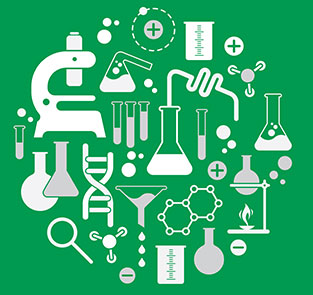
Replacing Mercury Thermometers
A New ASTM Interlaboratory Study Contributes to Research on Alternatives to Mercury
Mercury can be quite the contradictory metal: while its properties make it an ideal substance to measure temperature, it is also toxic. Mercury's toxicity has led several industries to look for suitable alternatives for its use in thermometry as well as its use in materials, processes and products.
Toward this end, ASTM International has conducted a recent interlaboratory study to create a precision and bias statement for D36, Test Method for Softening Point of Bitumen (Ring-and-Ball Apparatus). The ILS addresses the performance of liquid-in-glass thermometers with alternative thermometers.
D36, first approved by ASTM International Committee D08 on Roofing and Waterproofing in 1962, is under the jurisdiction of Subcommittee D08.03 on Surfacing and Bituminous Materials for Membrane Waterproofing and Built-Up Roofing. The standard covers the determination of the softening point of bitumen in the range from 30˚ to 157˚ C [86˚ to 315˚ F] using the ring-and-ball apparatus immersed in distilled water or U.S. Pharmacopeial Convention grade glycerin. The test described in D36 represents the classic use of thermometers in laboratories.
The D36 interlaboratory study, ILS 806 for Electronic and Other Non-Mercury Filled Thermometers Used to Test Softening Point of Asphalt, was initiated to compare the performance of mercury-in-glass thermometers with alternate thermometers in order to establish the precision between the two types of thermometers. This will enable laboratories to evaluate non-mercury thermometers compared to mercury-in-glass thermometers, with the goal of identifying thermometers to replace mercury-in-glass.
In the study, 10 laboratories were asked to test three different materials. Every test result represents the average of two individual determinations and all participants were instructed to report triplicate test results. E691, Practice for Conducting an Interlaboratory Study to Determine the Precision of a Test Method, was followed for the design and analysis of data.
The research report resulting from the study states that, based on the results of ILS 806, "there is no statistically significant bias between manual apparatus using a mercury-in-glass thermometer and automated apparatus using an electronic thermometer."
ASTM International looks forward to making further contributions toward the goal of characterizing the suitability of alternative thermometers.
Go to other GreenScene articles.
 SN Home
SN Home Archive
Archive Advertisers
Advertisers Masthead
Masthead RateCard
RateCard Subscribe
Subscribe Email Editor
Email Editor